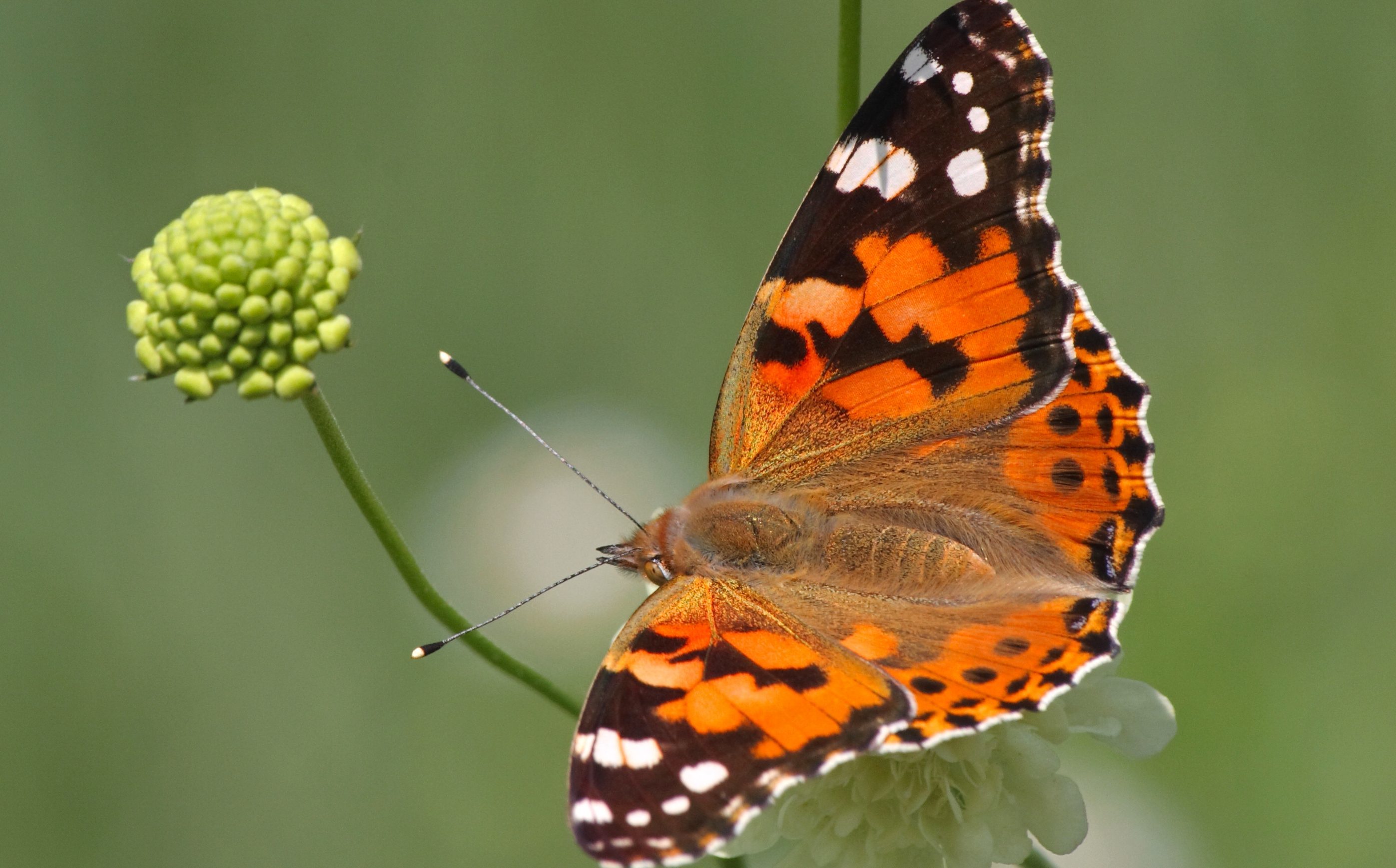It may only have a wingspan of a few centimetres yet these same paper-thin wings had just carried this painted lady butterfly all the way from the desert fringes of North Africa to the spot where I was now standing in the Ochils.
I had been watching a beautifully burnished small copper butterfly when a larger and browner butterfly floated across the track. This delicate butterfly alighted on the ground and I immediately recognised the intricate wing pattern of a painted lady – the first one I had seen for a while.
Some years they are abundant, in others scarce, but in the boom times many thousands descend upon our shores from North Africa. Why they should fly so far is unclear, because while they may breed once they arrive here, our winters are too cold for them to survive and they all perish. It is thought, however, that some individuals may attempt a return migration in autumn.
Their gargantuan flight is truly remarkable – and how can these fragile wings carry a butterfly so far? But looks can be deceptive and painted ladies are strong flyers, maintaining consistent speeds of up to 10 mph if the conditions are right. Some will even reach Shetland and Iceland.
I adore the Ochils for a whole variety of reasons, but at this time of year, it is for the abundance of their butterflies. My painted lady encounter was in Glen Sherup and the day was so very sunny, just perfect for butterflies as they fluttered above brilliant yellow birds-foot trefoil and other wildflowers by the side of the track.
As well as the painted lady and the small copper, there were also orange-tips, green-veined whites and heath brown butterflies about. In a week or so, the first common blue butterflies will join them along the path edge, making this such a very special time. In other parts of the Ochils, northern brown argus butterflies can be found too if you know where to look.
By the time I returned home my mind was so brimming with enthusiasm for butterflies that I couldn’t resist heading out again to another butterfly hotspot in the Ochils – Alva Glen. The first part of this spectacular glen is wooded, but on leaving the trees you hit a south-facing sun trap sheltered from prevailing westerlies and cold easterlies. It is rich in herbs and wildflowers such as wood sage and rock-rose, making it a superb place for all kinds of insects.
Especially abundant were speckled yellow moths – an exquisite day-flying moth that looks just like a butterfly.
On my descent, I came across several brown trout in the crystal clear rocky pools of the burn. Above and below this stretch of the burn are steep waterfalls impassable to fish. So, how did these trout get there and are they part of a self-sustaining population? As with the astonishing migration of the painted ladies, nature always throws up more questions than answers.
Info
Some painted ladies make the whole journey to Scotland from North Africa, but others may be second or third generation individuals which breed in Europe and migrate northwards in stages.










